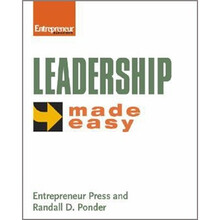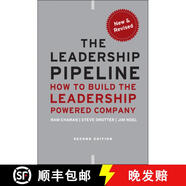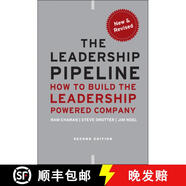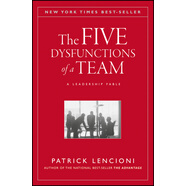Leadership Made Easy簡介,目錄書摘

—General (Ret.) Carl E. Vuono, former chief of staff of the U.S. Army
"Ponder captures and conveys the behaviors needed to establish a culture of leadership and drive individual and organizational performance to new heights."
—Dr. Henry McKinnel Jr., chairman and CEO of Pfizer Inc.
The conventional wisdom that says that some people are born leaders and others are not is wrong. Leadership is actually a skill—and one that can be developed.
Author Randall Ponder...
Preface xiii
Part 1 Understanding Leadership 1
1 Importance of a Leader 3
Everyday Leadership 4
Leadership vs. Management 5
Leadership Skills 6
2 Your Leadership Style 8
Theories of Leadership 8
Leadership Orientations 9
Personality, Psychology, and Leadership 13
Qualities of a Leader 14
3 A Leader's Attitude 16
Importance of a Leader's Attitude 17
Importance of Maintaining Your Leader's Attitude 21
Part 2 Technical and Analytical Skills (Primary-Level Leadership Skills) 25
4 Job-Specific Skills 27
Importance of a Strong Skills Foundation 28
Job-Specific Skills 29
Skills in Other Areas 29
Formal Education 30
Maintain and Improve Your Skills 31
5 Problem Solving and Decision Making 32
The Problem-Solving Process 33
The Nature of Decisions 36
The Decision-Making Process 36
The Payoff Chart 40
Creative and Critical Thinking 44
Decide with Confidence 45
6 Priorities Management 47
Control Your Time 47
Manage Stress 59
Maintain Your Lead 61
7 Project Management 63
Choose the Project Manager 65
Establish Objectives and Requirements 66
Select the Team 68
Plan the Project 71
Manage the Project 78
Monitor the Project 81
Coordinate Follow-up Activities 84
8 Monitoring 85
Use of Monitoring 86
The Monitoring Process 88
Formal Monitoring Procedures 91
9 Training and Development 94
A Leader's Four Training Guidelines 95
A Leader's Three Training Roles 97
Designing a Training Program 100
Development of Your Subordinates 106
Types of Development Programs 107
Leadership Development Resources 109
Prerequisites for Development Programs 111
Part 3 Relationship Skills (Intermediate-Level Leadership Skills) 113
10 Communication 115
The Communication Process 116
Determine Your Message 116
Choose the Method of Delivery and Send Your Message 117
Monitor the Receipt and Understanding of Your Message 118
Ten Methods for Improving Leadership Communication 120
11 Teamwork 128
Promote Teamwork 129
Plan Your Team 131
Organize Your Team 133
Optimize Your Team 139
Effective Meetings 143
12 Motivation 147
Principles Underlying Motivation 148
Motivational Goals for Leaders 152
13 Diversity 157
The Relevance of Diversity 159
Diversity Basics for Leaders 161
Diversity as a Long-Term Process 167
Actions to Maximize Diversity 167
14 Conflict Resolution 172
Steps for Successful Conflict Resolution 173
Negotiation and Conflict Resolution 177
A Leader's Approach to Win-Win Negotiations 178
15 Coaching 194
A Coach's Attitude 195
The Coaching Process 196
The Results of Coaching 201
Part 4 Strategic Skills (Upper-Level Leadership Skills) 203
16 Vision 205
The Visioning Process 206
Update Your Vision 211
17 Strategy 212
Planning and Strategy 213
The Strategy Process 213
Winning Strategies 220
18 Change 221
Prepare for Change 222
Initiate and Implement Change 225
The End Result 229
Index 231


![現(xiàn)貨 團隊協(xié)作的五大障礙 The Five Dysfunctions Of A Team: A Leadership Fable [Wiley經(jīng)管] 現(xiàn)貨 團隊協(xié)作的五大障礙 The Five Dysfunctions Of A Team: A Leadership Fable [Wiley經(jīng)管]](http://img14.360buyimg.com/n7/s186x186_jfs/t1/282116/27/6878/46046/67ddde7fFc78f4af6/9a040a498a14733a.jpg)




 京公網(wǎng)安備 11000002000088號
京公網(wǎng)安備 11000002000088號